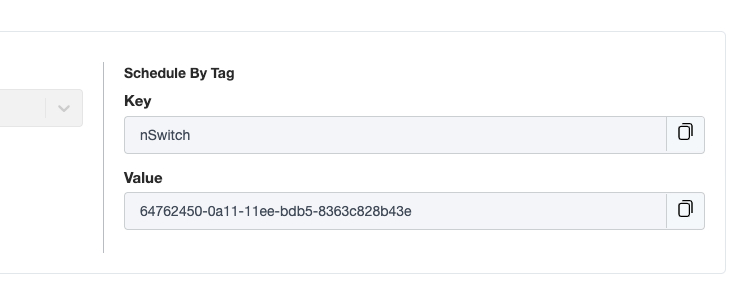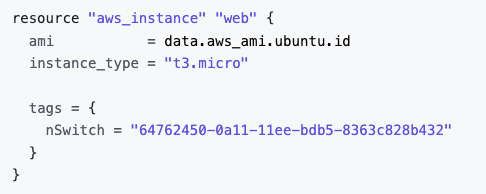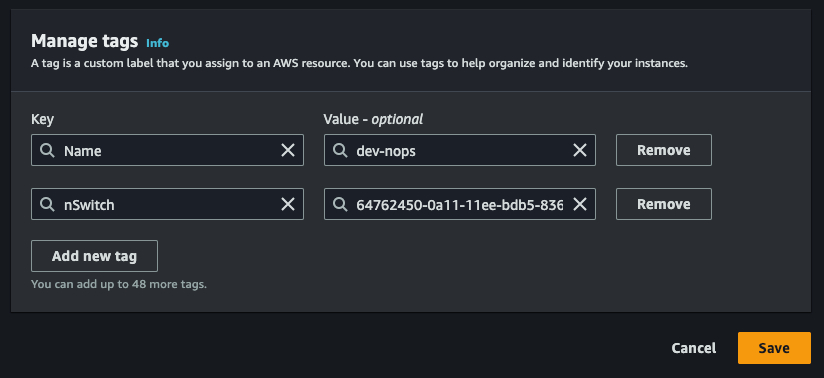Automatically Reduce Dev and QA Costs by Creating Tags Based Schedules
At nOps, a leading cloud management platform, we enable businesses to optimize resources and let them focus on innovation. We maximize cost savings on auto-pilot, with seamless one-click integration with your cloud services. We achieve all this with zero engineering effort and complete reliability. On a regular basis, we come across different challenges our customers face in optimizing their Dev, QA, and Staging environment costs.
To address these, we have a product called nSwitch, that can automatically pause resources in off hours, like weekends and evenings, for various resources like EC2, ASG, EKS, and RDS. But, to reduce the time and efforts invested in it, we are excited to announce the launch of our new feature: Tag-Based Scheduling. Read through to understand how it can help you save and how you can put it to use.
Announcing Tag-Based Scheduling
AWS environments are extremely dynamic, thus, manually scheduling resources especially during non-peak times, can be a complex process.
As a solution to this, today we are excited to introduce a new feature that addresses the above mentioned challenges: Tag-Based Scheduling. Simply put, when developers are provisioning resources, this feature allows them to utilize tags like ‘weekend-off’. nOps will then automatically handle the scheduling for these tagged resources. It’s a smarter, more efficient way to manage your resources with nOps.
By creating a schedule through our intuitive schedule-grid interface, we help you generate a tag that represents this schedule. This tag can then be copied and applied to any resources that you wish to align with this schedule, effectively pausing them when the schedule dictates. This seamless process integrates your resource management with your scheduling preferences, enhancing efficiency and cost-effectiveness.
Here’s how we streamline our own Resource management via Tag-based scheduling!
At nOps, we usually run and manage hundreds of different AWS resources in order to test/QA the cost-saving features we offer. Additionally, we have to manage our own UAT infrastructure. To streamline this, nOps’ DevOps and Engineering teams have implemented Tag-based scheduling internally as well. By simply adding a specific AWS tag to resources, resources can be scheduled to stop during non-working hours. This efficient system eliminates the need to manually attach resources to a schedule, allowing our engineering team to focus on their primary tasks.
Additionally, whether resources are managed through Infrastructure as Code (IaC) or directly via the AWS console, they can be tagged upon creation. nOps consistently monitors these tags. Once detected, the resources are automatically incorporated into the Scheduler. For clarity, resources added in this manner will display the tag label adjacent to the resource name.
For nOps’ operations, this feature has been effectively utilized to automatically attach all UAT and test resources via tags.
By implementing this straightforward tagging system for a single lab environment, we have realized annual savings of over $15,000 in addition to the operational cost benefits. We are helping you save AWS costs as well as reduce operational costs by minimizing the time needed.
Our engineers focus on innovation, and tag-based scheduling takes care of the rest.
How Does It Work?
nSwitch leverages EventBridge integration to automatically pause instances like EC2 instances, AutoScaling groups, RDS instances, RDS clusters, EKS node groups, or EKS clusters when they are not in use. But, Tag-Based Scheduling adds an extra layer of convenience and here’s how the process works:
Step 1: Create a scheduler with or without resources attached manually.
Step 2: Copy tag’s key and value generated by nOps in Schedule-By-Tag dashboard.
- Option 1:
You can add this tag to your Infrastructure as Code (IaC) (for example Terraform) solution to a particular resource or module.
- Option 2:
You can add this tag to your AWS resources manually such as EC2, ASG, EKS nodegroup, RDS instance or RDS cluster.
We highly recommend the first option as it offers a more efficient approach. This method requires a one-time setup, eliminating the need for repeated adjustments.
nOps continuously monitors the tags assigned to your resources and automatically adds them to the Scheduler as soon as it detects them, so the user does not need to do it manually. All resources automatically added by tag will be marked with the tag label near the name of the resource.
Schedule-by-Tag empowers users to take control of their costs by aligning resource usage with demand. By activating resources precisely when required and automatically pausing them during off-peak hours, organizations can achieve substantial cost savings over time.
With the introduction of tag-based scheduling, nOps continues to provide fully automated FinOps solutions. Our goal is to allow your team to focus on innovation, while nOps runs optimization on auto-pilot to help you track, analyze, and optimize accordingly.
We are excited to see how our customers will leverage this new feature to further optimize their AWS resources and reduce costs.
To learn more about tag-based scheduling or to schedule a demo today.











